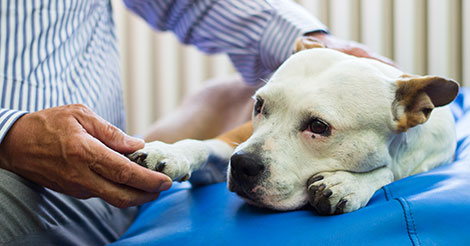By Dr Nicole Vassallo – Junior Associate
Pet lovers can agree that the best medicine at the end of a long day, week, month (or even your year!) is coming home to the unconditional love of your pet, but what feels worse than having a bad day is seeing our furry creatures suffer in situations where we can be of little or no help to them, and when medicine and treatment are not the answer.
Maltese Law witnessed the introduction of Subsidiary Legislation 439.17 entitled the ‘Emergency Euthanasia of Animals Regulations’ in June 2015, which was enacted with the scope of implementing national measures in the context of the emergency euthanasia of animals that have been victims of an accident in public places that prevents their transport for welfare reasons, to spare any avoidable pain, distress or suffering to the animal.
This piece of Subsidiary Legislation comes after the Minister of Veterinary Services was empowered to make regulations specifying the circumstances in which it shall be permissible to kill animals, the manner in which this can take place and the person by whom they may be killed.
To start, the term ‘emergency euthanasia’ is defined by the Regulations as the killing of animals which are injured, in severe pain or suffering and where there is no other practical possibility to alleviate this pain or suffering. The applicability of the Regulations, according to Article 3 of the same Regulations, is limited to emergency situations in public places or other spaces in the Maltese territory which may require euthanasia on the spot, which situations consist in the: (1) profuse and continuous bleeding (severe haemorrhage) where the animal would have lost more than an estimated 3% of its weight, (2) serious open wounds which may result in the prolapse of visceral organs, (3) orthopaedic/musculoskeletal traumas and lesions which would be either causing severe pain or suffering or would not allow the animal to stand in an upright position, (4) loss of consciousness and (5) any other situation, not specified by the Regulations, where animals can become uncontrollable and thus represent an increased risk to the health and safety of humans.
The first four limbs of this provision outline the emergency situations in which euthanasia of the animal may take place, if required, for medical reasons of an urgent nature. Meanwhile, the last limb on the basis of which euthanasia may take place if required is where the animal represents a threat to the health and safety of humans, the merits of which shall be discussed by the undersigned in another series of this article.
Upon the occurrence of one of the emergency situations mentioned in points (1) to (4) above, the veterinarian called on site must determine the level of pain and suffering of the animal which will deliver the verdict on whether to euthanise the animal to relieve it of its suffering. Where the animal is not found by the veterinarian in one of the terminal conditions mentioned in points (1) to (4) above, and therefore euthanasia of the animal is not required and can be avoided, the veterinarian may issue the necessary instructions to move the animal to a safer place to carry out treatment.
The Regulations distinguish between an ‘official’ veterinarian and a ‘private’ veterinarian. The former refers to a veterinary surgeon who is employed by the State as a veterinary officer, whereas the latter refers to a veterinary surgeon who exercises and performs private veterinary activities. Irrespective of whether the veterinarian taking the decision to perform the euthanasia is an official or private veterinarian, he/she must be registered in the Veterinary Surgeons’ Register as required by Article 43 of the Veterinary Services Act, shall carry the responsibility for the emergency euthanasia of the animal and shall ensure that the animal is clinically dead before disposing of the body.
It is made clear in the Regulations that the decision to euthanise an animal by the veterinarian concerned shall be final, implying that the owner of the animal concerned does not have a say in the decision to euthanise the animal should the grounds mentioned above persist. Furthermore, any person, especially the owner of the animal, ought not to obstruct the official or private veterinarian in the performance of his functions in accordance with these Regulations, as otherwise he/she may be facing criminal proceedings against him/she punishable by a fine, penalty and/or imprisonment.

